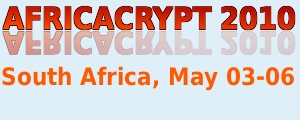South Africa
Language
South Africa is has 9 provinces and 11 official languages, of which English is one and spoken everywhere in South Africa. As part of the history of South Africa, many Europeans immigrated to South Africa in search of gold and diamonds, and it is not uncommon to find people who can speak German, Portuguese, and (to a lesser extent) French. Dutch and Flemish speaking people can easily communicate with people who speak Afrikaans (one of the official languages, and spoken in Cape Town as well).
Public transport
Public transport is less reliable when it comes the published time schedules. Generally trains don't run late at night, with the last train on a Sunday usually around 17:00. There are also local mini-bus taxis with fixed routes with a local system of hand signs indicating where they are going. It is usually best to take an approved shuttle from the airport to the hotel / guest house, and enquire at the hotel / guest house about transport to different places. A taxi can be fairly expensive way of getting around if lots of travel is going to take place, and it might be cheaper to hire a car at around R200 - R250 per day (20 - 25 Euro). Shop around on the internet though, as car rental prices differ significantly. Just keep in mind that, in South Africa, cars drive on the LEFT side of the road and not on the RIGHT side.
Currency
South African currency is called the Rand, abbreviated by R10 on prices meaning 10 Rand. 1 Euro is roughly 10 Rand and 1 US Dollar is roughly 8 rand. Money can be changed at the airport, major banks, and exchange bureaus in major tourist locations. Euros, US Dollars and Japanese Yen notes can be changed, but not all currencies can be changed into Rand in South Africa. It is best to buy foreign exchange in one of these currencies before travelling to South Africa. Automatic teller machines are located all over towns and cities, and most carry the Visa / Electron and Maestro signs, so it is possible to draw money directly from your own country if your own bank is also part of the Maestro or Visa / Electron system. However, check with you local bank before considering this option. Visa and MasterCard are accepted almost everywhere, and at some places American express cards as well. Some guest houses might not accept credit cards, and it is best to check with the guest house where you book on payment methods.
Tipping
It is customary to tip waiters and barmen around 10 - 15% of the bill, though it is not compulsory. A petrol attendant cleaning the windows of the car and checking the oil can also be tipped around R5, as well as car guards. Be careful however where you park your car, as not all car guard really gaurd the cars. It is usually best to park in a covered parking garage. Do not leave valuables in plain sight in the car, even when driving.
Cape Town and surroundings
The most well known landmark in Cape Town is Table Mountain, and one can
take a cable car to the top of the mountain. A famous attraction amongst
foreign tourists is the Victoria and Alfred Waterfront situated in the
harbour of Cape Town, from where a tour can be undertaken to Robben
Island, the prison where Nelson Mandela was locked up (just off the shore
of Cape Town and visible from the Waterfront). Cape Town has many
wonderful restaurants with cuisines from all over the world. Long Street
in Cape Town hosts perhaps some of the most interesting restaurants
(including some local cuisine restaurants), and is a buzz usually until
quite late in the evening. There are also over 100 day hiking routes
around the Cape Town area into the mountains and along the beautiful coast
lines. On the odd chance that one can spend a few extra days in Cape Town,
it is worth a web search on activities in and around (arguably) the most
beautiful part of South Africa (Cape Town and surround areas).
Stellenbosch is situated 50 Km to the east of Cape Town, and Cape Town can
be seen from Stellenbosch if one goes up the mountains. Cape Town
International airport is between Stellenbosch and Cape Town, and a freeway
provides for easy access between the town and the city. Stellenbosch is
surrounded by wine farms, and South Africa is well known worldwide for its
good wines coming from this area (as well as Paarl and Franschoek, which
are both about 30 minutes drive from Stellenbosch). Stellenbosch is to a
large extent a student town, with the University of Stellenbosch with its
beautiful old buildings making up a part of the centre of the town.
Stellenbosch is about 10 minute drive from the beach where one can go and
enjoy a walk on the beach or drink sundowners at the end of a long day.
Visit for more detailed information
and activities.


